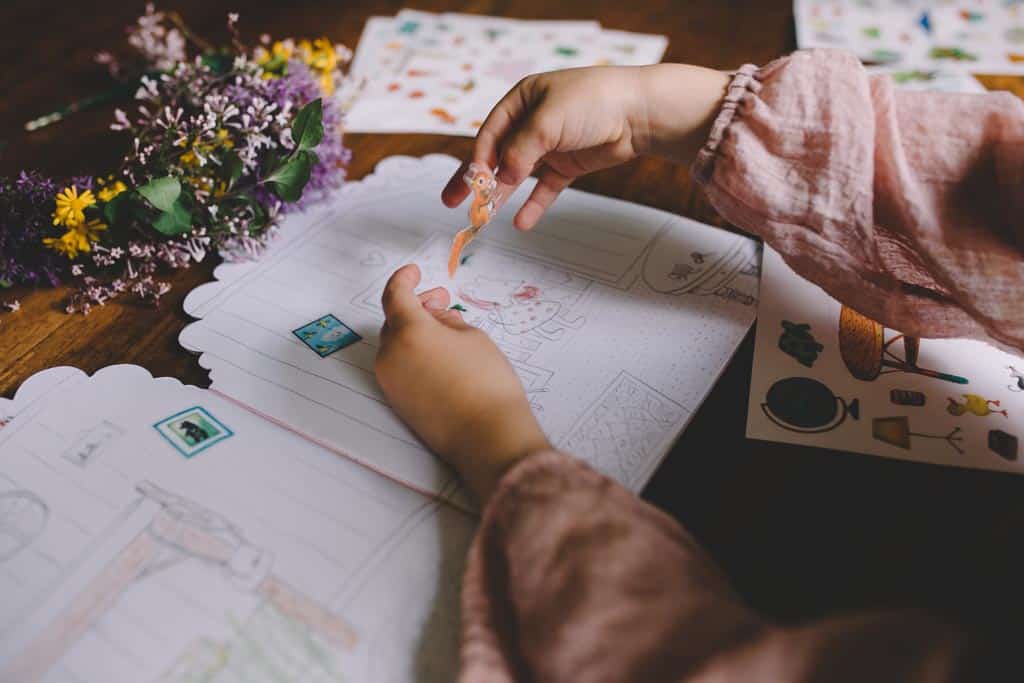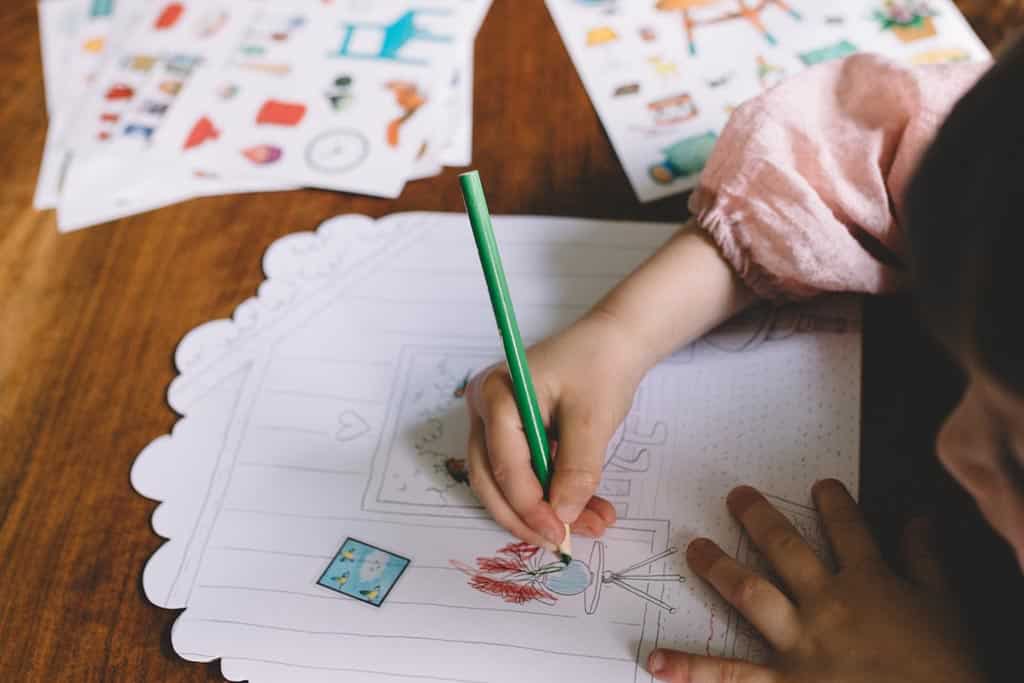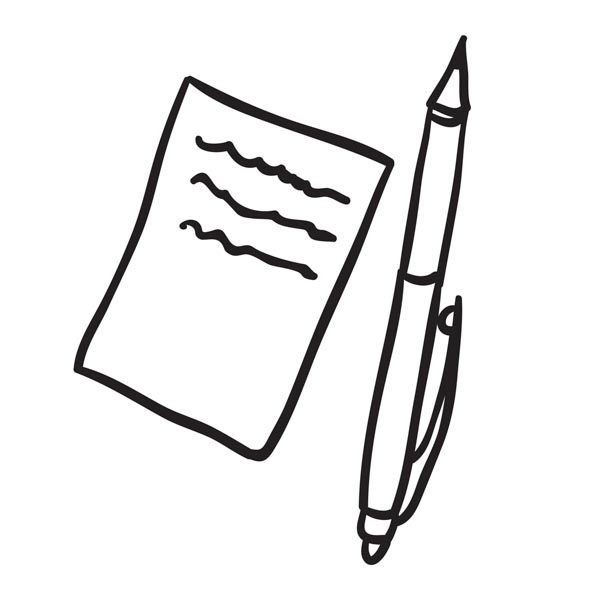What’s the best way to hold a pencil? The answer varies depending on age but it’s helpful to develop a functional grip by the time school starts.
For a toddler, it’s often with a balled fist or all five fingers arranged in an impromptu combination. Exactly how they hold it doesn’t matter at this stage. The important thing is that they’re holding the pencil and starting to make marks.
Table of contents
- Finger isolation
- Pincer grip
- Tripod grip
- Common problems with pencil grips
- Tips for a left-handed pencil grip
- The bottom line

All about finger isolation
What is finger isolation? It’s the ability to use one finger at a time. When babies begin using their hands, all their fingers move together at once – most of us are familiar with the full-fist grasp of a new baby around our own fingers. As they grow, babies begin to learn how to move individual fingers. At around 10 months they begin to use their index finger to point and to push buttons.
As they grow stronger and more co-ordinated, they’ll begin to isolate more fingers. It sounds a simple thing, but it’s important to encourage it from early on as it forms the foundations for the many fine-motor skills children use when they start school. From grasping pencils and using scissors to doing up buttons and tying laces, playing instruments and typing on a keyboard.
Try these simple ways to develop finger isolation while having fun:
- Sing nursery rhymes with finger wiggling actions, like Incey Wincey Spider and Twinkle Twinkle.
- Count using fingers (moving one finger at a time).
- Sing One, Two, Three, Four, Five, Once I Caught a Fish Alive.
- Make fingerprints using paint or play dough
- Push buttons
- Make finger puppets
- Press fingers into play dough or clay
The Pincer Grip
The pincer grip is the pressing together of the index finger and thumb. It first develops around 12 months, and is used to pick up small objects. Think of that slow, deliberate effort to pick up finger food. Older children use the pincer grip in a host of everyday actions, from tying laces and putting hair slides in, to sticking down pieces of collage. And it is the forerunner of the tripod grip (which, with the addition of the middle finger, is how we grip a pencil. More on this in a moment.)
Encouraging early confidence and strength with their pincer grip, makes the complicated business of learning to write with a pencil much easier for children.
Ideas for pincer grip practice:
- Finger food is a great way to practise pincer grip at mealtimes. Small foods like raisins, grapes and rice cakes are all excellent targets for a blossoming pincer.
- Rolling balls of playdough between finger and thumb helps to develop greater control after the basic movement is accomplished.
- Many stacking and threading toys also provide a good whole hand workout but require pincer grip for the finer details

Tripod grip
The tripod grip uses the thumb and index finger along with the middle finger. It’s the most commonly used grip and is used for some of life’s most important tasks, from holding cutlery and drinking cups, to wiping surfaces and drawing. It’s also the grip that helps children maintain a straight-ish line when they start writing, as the middle finger guides the pencil across the page.
Helping your child to develop a good tripod grip will help them handle pencils and paintbrushes with greater ease, and develop general strength and fluidity of movement in their hands – all of which makes the transition to the classroom easier for everyone.
Remember:
Tripod grip develops over time and is often not perfected until school age. But that doesn’t mean that your child isn’t making progress. Activities that lead to stronger, more dextrous fingers are an important stepping stone along the way.
Some ideas for working on tripod grip:
- Scissors: Cutting out snowflakes for Christmas or strips for making paper-chains will give the whole hand – but especially the middle fingers – an excellent tripod grip work-out. Choose child-friendly scissors that are safe but easy to use for small hands. Read more about scissor skills.
- Leaf or coin rubbing: Using fat crayons or chalks on their side requires the tripod grip.
- Squirty toys: Soft squirty balls or toys in the bath will build tripod grip strength while having lots of fun.
Tip:
Remind your child to rest the pencil on the middle finger, rather than pressing it with the finger’s tip. The middle finger is for support. The thumb and forefinger do all the work in holding a pencil.
If your child is having trouble using just the middle and index fingers, remind them to press their ring and little fingers into the palm of their hand. It sometimes helps to press a small object, such as rubber, between the outer two fingers and the palm to keep them tucked away.
Common problems with pencil grip
- Pressing too softly. If this is happening, you could try giving your child a softer lead pencil. Carbonless copy paper is also a helpful way of knowing if marks go to the yellow copy.
- Pressing too hard. Practice invisible or extremely light writing with your child. You can also experiment with a mechanical pencil, which typically has a smaller, lighter nib that breaks if pressed too hard. You can also put a piece of cardboard under the paper and see if your child can use their pencil grip for writing or drawing without making holes in the paper.
- Unusual wrist position. Wrist strength and position is also important for writing with pencils. Using a slanted board or a vertical surface like an easel can really help build strength in the wrist.
Tips for a left-handed pencil grip
Do left-handed children need to learn to write in a different way? Experts at the Handedness Research Institute say yes. In this helpful guide, they recommend that left-handed children adopt a slightly different paper position and pencil grip in order to write efficiently writing.
If your child is left-handed, it’s worth helping them place their grip further up the pencil barrel – approximately a 1 1/2 inch from the point. With this slightly higher position, left-handed children can more easily see what they’re writing as they go.
It’s also recommended to tilt the writing surface slightly to the left, in the opposite direction of their writing. This position follows the line of your child’s left arm more naturally. As a result, they will be able to see their handwriting as it appears, with no need to hook their left hand around and down.
Final word
Good pencil grip is important but don’t obsess over it. Better that your child feels confident to write and does so for pleasure. Don’t take the fun out mark making by insisting on the correct grip. There is a time to worry about your child’s grip but it is not in preschool.
Read more about starting school.
Are you ready for school?
Do you have a preschooler? Would you like them to develop some key skills before starting school? How wonderful to go into school on that first day feeling like you belong.
Get Set Five is a year-long course full of fun and free activities to do with your child.




